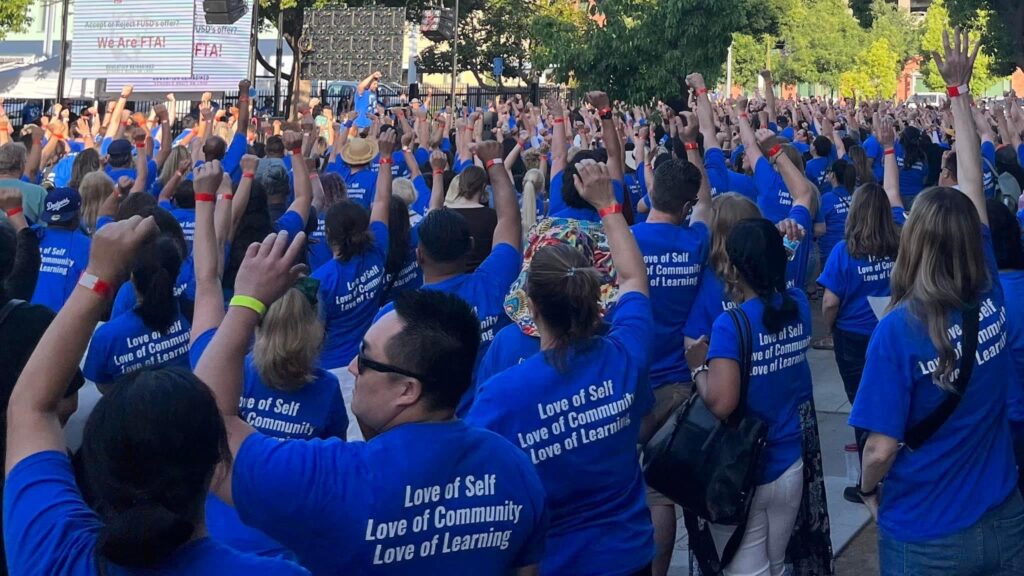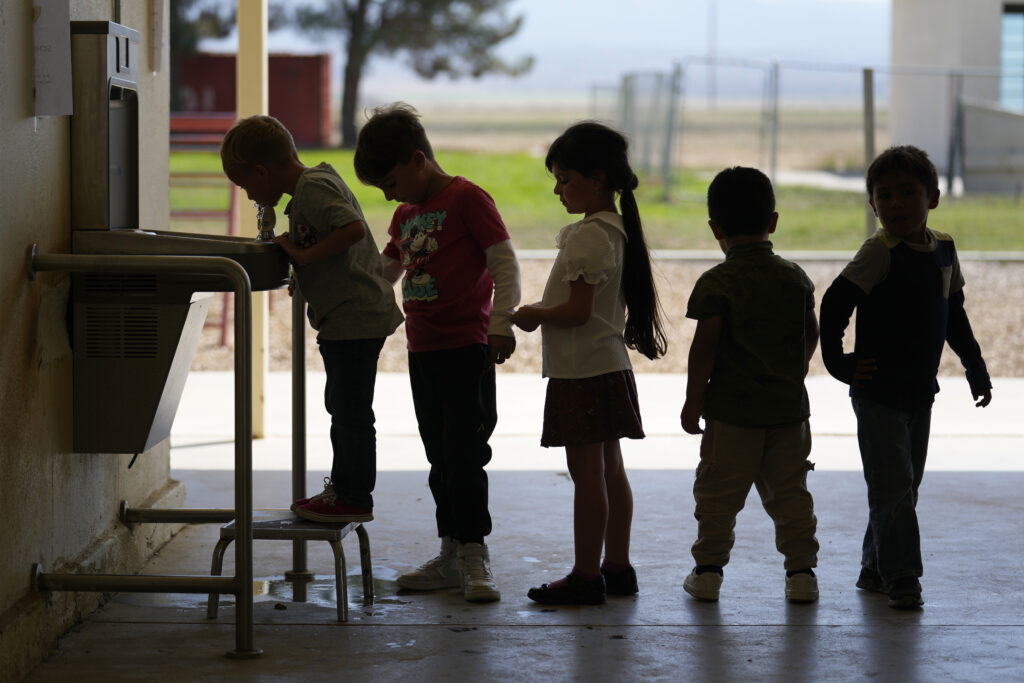Jennifer Berkshire is a veteran education journalist who understands the importance of public schools. She has a podcast called “Have You Heard?” She is the co-author of two books with historian Jack Schneider:
A Wolf at the Schoolhouse Door: The Dismantling of Public Education and the Future of School. And: The Education Wars: A Citizen’s Guide and Defense Manual.
Berkshire wrote the following brilliant article about the failure of the Democratic Party to recognize that most people send their children to public schools and don’t want them to be privatized. Some prominent Democrats support charter schools, which the radical right has used as a stepping stone to vouchers.
She wrote on her Substack blog “The Education Wars”:
And just like that, the Trump Administration has released the billions in funds for public schools it had suddenly, and illegally, frozen earlier this summer. The administration’s trademark combo of chaos and cruelty has been stemmed, at least temporarily. That Trump caved on this is notable in part because his hand was forced by his own party—the first time this has happened in the endless six months since his second term began. Make that the second time. Since I posted this piece, key senators from both parties decisively rejected the administration’s proposals to slash investments in K-12. Which raises an obvious question: of all of the unpopular policies being rolled out by the administration why would school funding be the one that forced a retreat?
“Do they really care more about public schools than about…Medicaid?” is how historian Adam Laats posed the question. In a word, yes. That’s because Medicaid is a program utilized by poor people, a constituency that however vast enjoys neither a forceful lobby nor the patronage of a friendly billionaire. Public education, despite the increasingly aggressive efforts to dismantle it, remains one of our only remaining institutions that serves rich and poor alike. (For an excellent and highly readable history of how this came to be, check out Democracy’s Schools: the Rise of Public Education in America by historian Johann Neem.)
This enduring cross-class alliance behind public schools, by the way, is a big part of why public education has been in the cross hairs of anti-tax zealots for so long. It’s also why school voucher programs keeps accidentally benefiting the most affluent families. Offering them a coupon for private school tuition is a nifty way to drive a stake through, not just this cross-class coalition that consistently supports things like more school funding and higher teacher pay, but the entire project of public education.
A winning issue
As David Pepper pointed out recently, the Trump Administration was forced to back down on school funding because of the bipartisan nature of support for public schools—part of what he calls a “clear and consistent pattern” that we’ve witnessed again and again in recent years.
Whether we’re talking about the overwhelming votes against vouchers in red states in November or the bottom-of-the-barrell poll numbers for the Trump education agenda, public education defies the usual logic of these hyper-partisan times. Which makes it all remarkable that so few Democrats seem to understand the potency of the issue. Whither the Democrats is a question that Pepper, one of our most astute political commentators, has been asking too:
I’m talking about an unflinching embrace of the value of public schools to kids, families and communities, and a blunt calling out of the damage being done to those schools by the reckless privatization schemes of recent years.
It’s not coincidence, I’d argue, that rising stars in the Democratic Party including Kentucky governor Andy Beshear or Texas state representative James Talarico played key roles battling vouchers in their states. And before Tim Walz was muffled by the Harris campaign, we heard him start to articulate a sort of prairie populist case for public education, in which rural schools are the centers of their communities and today’s school privatizers are the equivalent of nineteenth-century robber barrons. The master class on how Democrats should talk about education, though, comes via Talarico’s recent appearance on Joe Rogan’s podcast.
Clocking in at two hours and 44 minutes, the conversation shows why Talarico is ascendant. But it was handling of the school voucher issue that truly demonstrated his chops. He deftly explained to Rogan that Texas has essentially been captured by conservative billionaires, and that despite their deep pockets and political sway, the anti-voucher coalition had nearly won anyway.
Ultimately we didn’t win. [It] kind of came down to a photo finish, but it did to me provide a template for what happens if we actually loved our enemies, if we rebuilt these relationships. Like who could we take on if we did it together? Democrats and Republicans, conservatives and progressives. Like, I don’t know, sometimes I sound a little Pollyanna.
Rogan’s response was just as instructive. “It’s not us versus them. It’s the top versus the bottom.”
The dud brigade
Having interviewed countless Republicans who oppose vouchers over the past year, I remain utterly convinced that there is no other issue that both resonates across party lines and exposes the influences of billionaires behind school privatization. Which makes it all the more remarkable that Democrats like Talarico and Beshear remain such a minority in the party. Especially at the national level, candidates and commentators largely view public education with disdain. Indeed, as the endless battles play out over the future of the Democratic Party, we can look forward to a full-court press pressuring blue state governors to opt in to the new federal voucher program. And while the school choice lobby will be leading the charge, influential voices from within the party—like this guy or this guy—will be making the case that vouchers = ‘kids-first policy’ and that Democrats need to get on board or be left behind.
Part of what has been so refreshing about listening to Talarico, Beshear, Walz and other rising stars like Florida’s Maxwell Frost, is that they’re not just opposing school privatization but making a bold case for why we have public schools in the first place. They’re rising to the challenge that David Pepper throws down in which Democrats unflinchingly “embrace the value of public schools to kids, families and communities” and bluntly call out “the damage being done to those schools by the reckless privatization schemes of recent years.”
Now contrast that with the way that so many influential Democrats talk about education—the bloodless rhetoric of ‘achievement,’ ‘data,’ and ‘workforce preparation’ that resonates with almost no one these days. Here’s Colorado governor Jared Polis, for example, rolling out the National Governor’s Association’s Let’s Get Ready Initiative, an impossibly dreary vision of K-12 education that hinges on a “cradle-to-career coordination system that tracks how kids are doing, longitudinally, from pre-K through high school into higher education and the workforce.” If you want a bold case for why we have public schools, you won’t find it here. Deftly combining right-wing talking points (the kids are socialists!) with the same corporate pablum that centrist Democrats have been peddling for years (the skills gap!), this is a vision that is a profound mismatch for our times. I read a sentence like this one—“Competition between schools, districts and states will lead to more students being ready for whatever the future might hold”—and I die a little inside.
Back in 2023, Jacobin magazine and the Center for Working-Class Politics released a study called “Trump’s Kryptonite” about how progressives can win back the working class. Among its many interesting findings was this: the candidate best equipped to appeal to working class voters with a populist message was a middle school teacher. I’ve referenced this study endlessly in my writing and opinonating but it wasn’t until I listened to the Rogan episode with James Talarico that I really reflected on why a middle school teacher might make such an effective candidate. The exchange consists largely of Rogan peppering Talarico with the sorts of endlessly curious queries that a bright seventh grader might fire off. To which Talarico, an actual former middle school teacher, responds patiently and without condescension, largely steering clear of the sorts of policy weeds that are incomprensible to regular people.
In the coming months, we’ll be told endlessly that the future of the Democratic Party belongs to Rahm Emanuel, Cory Booker, Gina Raimondo or Jared Polis—all of whom represent the identical brand of ‘straight talk’ about the nation’s schools that Democrats have been trying—and failing—to sell to voters for decades. That same Jacobin study, by the way, found that the very worst candidates that Democrats can run are corporate executives and lawyers. I’d add one more category to this list: corporate education reformer.













